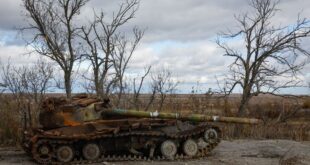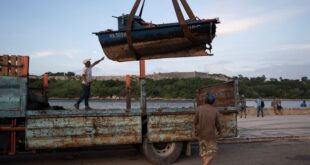SANTIAGO (Reuters) – Two people are dead from flooding in the central-southern region of Chile on Monday, while thousands others have been evacuated or left homeless from dangerous rains pounding isolated communities.
President Gabriel Boric declared a state of catastrophe on Monday while visiting one of the worst affected areas, some 250 kilometers (155 miles) south of the capital Santiago.
In late June surrounding areas had experienced some of the heaviest rainfall in three decades, exacerbated by the El Nino weather pattern that has led to rainier winters and springs in the central-southern part of Chile, as well as warmer temperatures.
Forecasters expect more rain to fall across this mountainous area, which authorities warn increases the risk of flooding and landslides.
More than 26,000 people remain cut off from basic services and almost 34,000 have been evacuated, according to the Chilean disaster agency Senapred. Some 38,000 are without electricity in the affected area that is home to rural farming communities.
“There are three vehicles in my window and the furniture is destroyed,” Silvia Rojas, whose home had been badly affected, told Reuters.
Boric asked Chileans to comply with the evacuation orders, given how much of the region is at risk of rivers bursting their banks.
“When these messages are received, it is not a joke, you must evacuate immediately,” the president said on Monday.
The winter weather season has been eventful in Chile, with unusually high temperatures and the most intense rainstorms in decades leaving thousands homeless and roads blocked in the south-central area of the country.
The government had also declared a state of catastrophe in June when severe weather affected the El Teniente mine, the largest copper mine run by state-owned Codelco. There have been no disruptions to mining activity following the storms in recent days, according to the company.
(Reporting by Natalia Ramos and Lucinda Elliott; Editing by Josie Kao)
 BeritaKini.biz Berita Viral Terkini di Malaysia
BeritaKini.biz Berita Viral Terkini di Malaysia





